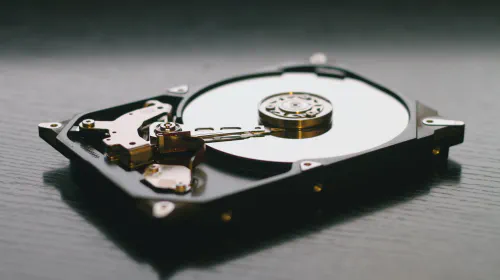Unlocking Positive Outcomes with Ethical Technology: A Comprehensive Guide
Salomon Kisters
Jul 6, 2023This post may contain affiliate links. If you use these links to buy something we may earn a commission. Thanks!
In a world driven by technology, where new advancements are made every day, it is crucial to consider the ethical implications of our technological choices.
In this blog post, we will explore the essence of ethical technology and how it can be unlocked to ensure positive outcomes for both individuals and society as a whole.
Understanding Ethical Technology
Ethical technology refers to the conscious design, development, and use of technology that considers the needs and well-being of all stakeholders involved. It goes beyond legal compliance and encompasses principles such as fairness, transparency, privacy, and accountability. As technology becomes more embedded in our lives, it is imperative that we prioritize ethical considerations to avoid unintended negative consequences.
Identifying Ethical Dilemmas
One of the first steps in unlocking the essence of ethical technology is to identify the potential ethical dilemmas that may arise. By proactively acknowledging these dilemmas, we can work towards finding ethical solutions that align with our values. Some common ethical dilemmas in technology include:
1. Privacy and Data Protection
The collection and use of personal data have become a significant concern in the digital age. Ethical technology should prioritize the protection of individuals’ privacy and ensure that their data is handled responsibly. Designing systems that minimize data collection, obtaining informed consent, and implementing strong security measures are essential steps toward safeguarding privacy.
2. Algorithmic Bias
Algorithms are increasingly being used to make decisions that impact our lives, from job applications to loan approvals. However, these algorithms can perpetuate biases and discrimination if not designed and trained carefully. Ethical technology should strive for fairness and inclusivity by regularly monitoring and addressing algorithmic bias and ensuring diverse representation in the development process.
3. Environmental Sustainability
The production and use of technology can have a significant environmental footprint. Ethical technology should consider the environmental impact at every stage of the product lifecycle, from responsible sourcing of materials to designing energy-efficient systems and promoting recycling and proper disposal practices.
4. Automation and Job Displacement
Advancements in automation and artificial intelligence have the potential to disrupt job markets and lead to unemployment for many. Ethical technology should aim to mitigate these effects by promoting reskilling and upskilling opportunities, emphasizing human-centered design where technology complements human skills, and ensuring a just transition for workers.
5. Ethical Use of Emerging Technologies
As emerging technologies like virtual reality, augmented reality, and artificial intelligence continue to evolve, it is essential to address the ethical implications they bring. Ethical technology calls for responsible innovation, considering the social, cultural, and psychological impacts of these technologies and ensuring they are designed and used in ways that enhance human well-being.
Incorporating Ethical Principles in Technology Design
To truly unlock the essence of ethical technology, it is not enough to simply identify the ethical dilemmas. We must also actively incorporate ethical principles into the design and development process. Here are a few ways we can achieve this:
1. Ethical Frameworks and Guidelines
Developing and adhering to ethical frameworks and guidelines can provide a roadmap for ethical decision-making in the technology industry. These frameworks should consider the specific ethical concerns relevant to a particular technology and help developers and designers navigate through complex ethical choices.
2. User-Centric Design
Putting the needs and well-being of end-users at the center of the design process is a fundamental principle of ethical technology. By involving users in the design process through user testing, feedback sessions, and iterative development, we can ensure that the technology meets their needs and respects their values.
3. Transparency and Explainability
Promoting transparency and explainability in technology (e.g., with OriginStamp) is crucial to ensure accountability and build trust with users. Ethical technology should strive to be transparent about how data is collected, used, and shared, as well as the decision-making processes of algorithms. Providing clear explanations to users about the reasoning behind system outputs can empower them to make informed decisions.
4. Continuous Evaluation and Improvement
Technology is ever-evolving, and as such, ethical considerations need to be continuously evaluated and improved upon. Regular audits and assessments can help identify any ethical gaps and allow for corrective actions to be taken. Moreover, incorporating feedback from users and stakeholders enables technology to adapt and align with changing ethical standards.
Conclusion
As technology continues to shape our lives, unlocking the essence of ethical technology becomes paramount.
By identifying ethical dilemmas, incorporating ethical principles in design, and fostering collaboration, we can ensure that technology benefits individuals and society as a whole.
Ethical technology holds the key to a future where innovation and progress go hand in hand with ethical considerations, creating a more just and sustainable world for al
Stay informed with the latest insights in Crypto, Blockchain, and Cyber-Security! Subscribe to our newsletter now to receive exclusive updates, expert analyses, and current developments directly to your inbox. Don't miss the opportunity to expand your knowledge and stay up-to-date.
Love what you're reading? Subscribe for top stories in Crypto, Blockchain, and Cyber-Security. Stay informed with exclusive updates.
Please note that the Content may have been generated with the Help of AI. The editorial content of OriginStamp AG does not constitute a recommendation for investment or purchase advice. In principle, an investment can also lead to a total loss. Therefore, please seek advice before making an investment decision.

Blockchain Full Nodes: Functions, Types, and More | OriginStamp
Learn about blockchain full nodes, their functions, types, and more. Discover how full nodes store complete blockchain data and perform various tasks.

Ethereum vs. Cardano - What's the Difference?
Those who are well versed in the world of cryptocurrency undoubtedly know about the Cardano vs. Ethereum debate. Let's explore.

Wallet Address of Satoshi Nakamoto - Bitcoins Genesis Block
Learn about the wallet address of Satoshi Nakamoto, the enigmatic creator of Bitcoin, and explore the details of the Genesis Block that started it all.
Protect your documents
Your gateway to unforgeable data. Imprint the authenticity of your information with our blockchain timestamp